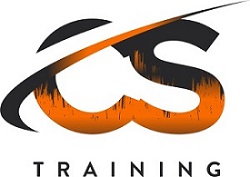Microsoft Word Training - Level 3
Learning Outcomes: Ms Word Level 3 is designed for Microsoft Word users who are keen to extend their understanding and knowledge of the software beyond basic document creation so that they can create and work with features such as SmartArt, indexes, master documents interactive fields and much more.
Course Pre-Requisites: : Microsoft Word Level 3 is designed for users who are already familiar with Word and we highly recommend that users complete MS Word level 2 prior to level 3. It is also important for learners to have a general understanding of personal computers and the Windows operating system as the learner will be required to start applications, work with and copy files, and locate file folders.
With many tips and shortcuts to help you create stylish documents faster and with more functionality, this course will enhance your level 2 Word skills to include advanced tables, fields, table of contents importing, protecting documents, creating indexes and recording macros!
Duration: 3 hours
COURSE OUTLINE
Smart Art Understanding SmartArt Inserting a SmartArt Graphic Inserting Text Indenting Text Changing the SmartArt Style Changing SmartArt Colours Changing a SmartArt Layout Adding More Shapes to SmartArt Resizing SmartArt
Table of Contents Inserting a Table of Contents Navigating With a Table of Contents Updating Page Numbers Updating a Table of Contents Customising a Table of Contents Formatting a Table of Contents
Indexing Marking Index Entries Creating an AutoMark File Marking Index Entries With an AutoMark File Removing Marked Entries Generating an Index Modifying the Index Format Updating an Index
Master Documents Understanding Master Documents Creating a Master Document Creating Subdocuments Working With Master Document Views Inserting Subdocuments Formatting a Master Document Editing Subdocuments Merging Subdocuments Splitting Subdocuments Deleting Subdocuments Building a Table of Contents Printing a Master Document |
Footnotes and End notes
Inserting Footnotes Inserting Endnotes Locating Footnotes and Endnotes The Footnote and Endnote Dialog Box Changing the Number Format Converting Footnotes and Endnotes Deleting Footnotes and Endnotes
Bookmarks Creating Bookmarks Navigating With Bookmarks Deleting Bookmarks
Cross Referencing Creating Cross-References Deleting Cross-References
AutoCorrect Using AutoCorrect Adding AutoCorrect Entries Using Math AutoCorrect Understanding AutoFormat Using AutoFormat Using AutoFormat as You Type Building Blocks AutoText Versus Quick Parts Inserting a Building Block Creating Quick Parts Saving Building Blocks Inserting Quick Parts Editing & Deleting Building Blocks
Document Proofing Features Proofreading Your Document Using Proofreading Marks Disabling the Spelling and Grammar Checker Customising the Spelling Checker Customising the Grammar Checker Using the Thesaurus |
Setting a Different Proofing Language
Translating Selected Text Setting the Default Language
Custom Dictionaries Understanding Custom Dictionaries Adding Words to the Custom Dictionary Adding Words to the Custom Dictionary File Deleting Words From the Custom Dictionary Creating a Custom Dictionary Changing the Default Custom Dictionary Disabling and Enabling a Custom Dictionary Removing a Custom Dictionary
Working Collaboratively Co-Authoring Documents Saving to OneDrive Sharing Documents Opening Shared Documents
Document Commenting Inserting Comments Working With Comments Printing Comments
Tracking Changes Understanding Tracking Changes Enabling and Disabling Tracked Changes Switching Between Simple Markup & All Markup Using Comments in Tracked Changes Showing and Hiding Markup Showing Revisions Inline and in Balloons Advanced Tracking Options Accepting and Rejecting Changes
Comparing Documents Understanding Document Comparisons Selecting Documents to Compare Accepting and Rejecting Changes Saving the Revised Document
Protecting Documents Understanding Document Protection Making a Document Read Only Working With a Read Only Document Restricting Formatting Working With Formatting Restrictions Restricting Editing Making Exceptions Stopping Document Protection Applying an Open Document Password Applying a Modify Document Password
Working With PDF Documents Understanding PDF Documents Saving a Document as a PDF Viewing a PDF File in Reader Opening and Editing a PDF in Word |
Fields Understanding Fields The Field Dialog Box Inserting a Document Information Field Setting Field Properties Showing and Hiding Field Codes Showing and Hiding Field Shading Inserting Formula Fields Inserting a Date and Time Field Updating Fields Automatically When Printing Locking and Unlocking Fields Applying a Number Format
Interactive Fields Understanding Interactive Fields Inserting a FILLIN Field Typing Field Codes Into a Document Activating Interactive Fields Inserting an ASK Field Using REF to Display Bookmarks Activating Fields Automatically
Electronic Forms Understanding Electronic Forms in Word Creating the Form Layout Understanding Content Controls Displaying the Developer Tab Inserting Text Controls Setting Content Control Properties Inserting the Date Picker Control Inserting Prompt Text Inserting Formulas Inserting a Combo Box Control Inserting a Drop Down List Control Protecting and Saving the Form Using an Electronic Form Editing a Protected Form
Macros Understanding Macros in Word Setting Macro Security Saving a Document as Macro Enabled Recording a Macro Running a Macro Assigning a Macro to the Toolbar Assigning a Keyboard Shortcut to a Macro Editing a Macro Creating a MacroButton Field Copying a Macro Deleting a Macro |
Tips for Developing Macros

